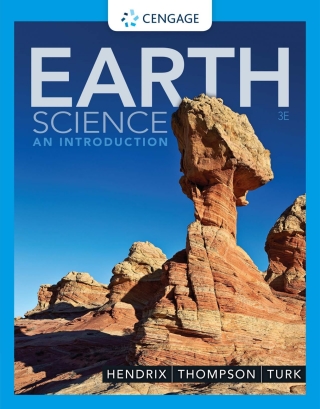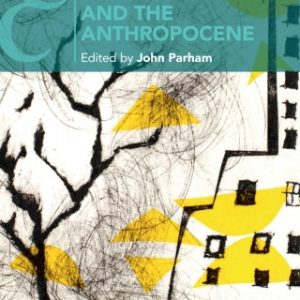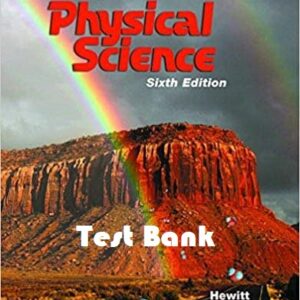Buy Earth Science, 3rd Edition PDF ebook by author Mark Hendrix; Graham R. Thompson – published by Cengage Learning in 2021 and save up to 80% compared to the print version of this textbook. With PDF version of this textbook, not only save you money, you can also highlight, add text, underline add post-it notes, bookmarks to pages, instantly search for the major terms or chapter titles, etc.
You can search our site for other versions of the Earth Science, 3rd Edition PDF ebook. You can also search for others PDF ebooks from publisher Cengage Learning, as well as from your favorite authors. We have thousands of online textbooks and course materials (mostly in PDF) that you can download immediately after purchase.
Note: e-textBooks do not come with access codes, CDs/DVDs, workbooks, and other supplemental items.
eBook Details:
Full title: Earth Science, 3rd Edition
Edition: 3rd
Copyright year: 2021
Publisher: Cengage Learning
Author: Mark Hendrix; Graham R. Thompson
ISBN: 9780357120088, 9780357120088
Format: PDF
Description of Earth Science, 3rd Edition:
Inspired by reader surveys, focus groups and interviews, Hendrix/Thompson’s EARTH SCIENCE: AN INTRODUCTION, 3rd Edition, delivers concise yet comprehensive coverage in an engaging and accessible format for majors and non-majors alike. The revised text brings concepts to life with current research and examples, a new-and-improved art program, over 150 new photos, and a clean, modern design.Important Notice: Media content referenced within the product description or the product text may not be available in the ebook version.
Table of Contents of Earth Science, 3rd Edition PDF ebook:
Brief ContentsContentsPrefaceChapter 1: Earth SystemsIntroductionThe Earth’s Four SpheresEarth SystemsTime and Rates of Change in Earth ScienceThreshold and Feedback EffectsHumans and Earth SystemsKey Concepts ReviewImportant TermsReview QuestionsChapter 2: MineralsIntroductionWhat Is a Mineral?The Chemical Composition of MineralsThe Crystalline Nature of MineralsPhysical Properties of MineralsMineral Classes and the Rock-Forming MineralsCommercially Important MineralsHarmful and Dangerous Rocks and MineralsKey Concepts ReviewImportant TermsReview QuestionsChapter 3: RocksIntroductionRocks and the Rock CycleIgneous RocksSedimentary RocksMetamorphic RocksKey Concepts ReviewImportant TermsReview QuestionsChapter 4: Geologic TimeEarth Rocks, Earth History, and Mass ExtinctionsGeologic TimeRelative Geologic TimeUnconformities and CorrelationAbsolute Geologic TimeThe Geologic Time ScaleKey Concepts ReviewImportant TermsReview QuestionsChapter 5: Geologic ResourcesIntroductionMineral ResourcesOre and Ore DepositsMineral Reserves vs. Mineral ResourcesMines and MiningEnergy Resources: Coal, Petroleum, and Natural GasUnconventional Petroleum and Gas ReservoirsEnergy Resources: Nuclear Fuels and ReactorsEnergy Resources: Renewable EnergyConservation as an Alternative Energy ResourceEnergy for the 21st CenturyKey Concepts ReviewImportant TermsReview QuestionsChapter 6: The Active EarthThe Origins of Continents and OceansAlfred Wegener and the Origin of an Idea: The Continental Drift HypothesisThe Earth’s LayersThe Seafloor Spreading HypothesisThe Theory of Plate TectonicsThe Anatomy of a Tectonic PlateWhy Plates Move: The Earth as a Heat EngineSupercontinentsIsostasy: Vertical Movement of the LithosphereHow Plate Tectonics Affect Earth’s SurfaceHow Plate Tectonics Affect Earth’s ClimateKey Concepts ReviewImportant TermsReview QuestionsChapter 7: Earthquakes and the Earth’s StructureIntroductionAnatomy of an EarthquakeEarthquake WavesEarthquakes and Tectonic Plate BoundariesEarthquake Damage and Hazard MitigationEarthquake PredictionStudying the Earth’s InteriorEarth’s MagnetismKey Concepts ReviewImportant TermsReview QuestionsChapter 8: Volcanoes and PlutonsMagmaBasalt and GranitePartial Melting and the Origin of ContinentsMagma BehaviorPlutonsVolcanoesVolcanic Explosions: Ash-Flow Tuffs and CalderasRisk Assessment: Predicting Volcanic EruptionsVolcanic Eruptions and Global ClimateKey Concepts ReviewImportant TermsReview QuestionsChapter 9: MountainsFolds and Faults: Geologic StructuresMountains and Mountain RangesIsland Arcs: Subduction Where Two Oceanic Plates ConvergeThe Andes: Subduction at a Continental MarginThe Himalayas: A Collision between ContinentsMountains and Earth SystemsKey Concepts ReviewImportant TermsReview QuestionsChapter 10: Weathering, Soil, and ErosionIntroductionWeathering and ErosionMechanical WeatheringChemical WeatheringSoilMass Wasting and LandslidesTypes of Rapid Mass WastingPredicting and Avoiding the Effects of Mass WastingKey Concepts ReviewImportant TermsReview QuestionsChapter 11: FreshwaterIntroductionThe Water CycleStreamsStream DepositionFloodsLakesWetlandsGroundwaterHot Springs, Geysers, and Geothermal EnergyKey Concepts ReviewImportant TermsReview QuestionsChapter 12: Water ResourcesIntroductionWater Supply and DemandDams and DiversionThe Great American DesertWater and International PoliticsWater PollutionHow Sewage, Detergents, and Fertilizers Pollute WaterwaysToxic Pollutants, Risk Assessment, and Cost-Benefit AnalysisGroundwater PollutionNuclear Waste DisposalThe Clean Water Act: A Modern PerspectiveKey Concepts ReviewImportant TermsReview QuestionsChapter 13: Glaciers and GlaciationsIntroductionFormation of GlaciersGlacial MovementGlacial ErosionGlacial DepositsThe Pleistocene GlaciationSnowball Earth: The Greatest Glaciation in Earth’s HistoryThe Earth’s Disappearing GlaciersKey Concepts ReviewImportant TermsReview QuestionsChapter 14: Deserts and WindIntroductionWhy Do Deserts Exist?Water and DesertsTwo American DesertsWindDesertificationKey Concepts ReviewImportant TermsReview QuestionsChapter 15: Ocean BasinsThe Origin of OceansThe Earth’s OceansStudying the SeafloorFeatures of the SeafloorSediment and Rocks of the SeafloorContinental MarginsKey Concepts ReviewImportant TermsReview QuestionsChapter 16: Oceans and CoastlinesIntroductionGeography of the OceansSeawaterTidesSea WavesOcean CurrentsThe SeacoastEmergent and Submergent CoastlinesBeachesLife in the SeaGlobal Warming and Rising Sea LevelKey Concepts ReviewImportant TermsReview QuestionsChapter 17: The AtmosphereIntroductionEarth’s Early AtmospheresThe Modern AtmosphereAtmospheric PressureAtmospheric TemperatureAir PollutionDepletion of the Ozone LayerKey Concepts ReviewImportant TermsReview QuestionsChapter 18: Energy Balance in the AtmosphereIntroductionIncoming Solar RadiationThe Radiation BalanceEnergy Storage and Transfer: The Driving Mechanisms for Weather and ClimateTemperature Changes with Latitude and SeasonTemperature Changes with GeographyKey Concepts ReviewImportant TermsReview QuestionsChapter 19: Moisture, Clouds, and WeatherMoisture in AirCooling and CondensationRising Air and PrecipitationTypes of CloudsFogPressure and WindFronts and Frontal WeatherHow the Earth’s Surface Features Affect WeatherThunderstormsTornadoes and Tropical CyclonesHurricane KatrinaEl NinoKey Concepts ReviewImportant TermsChapter 20: ClimateIntroductionGlobal Winds and ClimateClimate Zones of EarthUrban ClimatesKey Concepts ReviewImportant TermsReview QuestionsChapter 21: Climate ChangeIntroductionClimate Change in Earth’s HistoryMeasuring Climate ChangeAstronomical Causes of Climate ChangeWater and ClimateThe Natural Carbon Cycle and ClimateTectonics and Climate ChangeGreenhouse Effect: The Carbon Cycle and Global WarmingFeedback and Threshold Mechanisms in Climate ChangeKey Concepts ReviewReview QuestionsChapter 22: Motions in the HeavensThe Motions of the Heavenly BodiesAristotle and the Earth-Centered UniverseThe Renaissance and the Heliocentric Solar SystemThe Motions of the Earth and the MoonModern AstronomyKey Concepts ReviewImportant TermsReview QuestionsChapter 23: Planets and Their MoonsThe Solar System: A Brief OverviewThe Terrestrial PlanetsThe Moon: Our Nearest NeighborThe Jovian Planets: Size, Compositions, and AtmospheresMoons of the Jovian PlanetsPlanetary RingsPluto and Other Dwarf PlanetsAsteroids, Comets, and MeteoroidsKey Concepts ReviewImportant TermsReview QuestionsChapter 24: Stars, Space, and GalaxiesIntroductionIn the Beginning: The Big BangThe Nonhomogeneous UniverseThe Birth of a StarThe SunStars: The Main SequenceThe Life and Death of a StarNeutron Stars, Pulsars, and Black HolesGalaxiesThe Milky WayQuasarsDark MatterThe End of the UniverseWhy Are We So Lucky?Key Concepts ReviewImportant TermsReview QuestionsAppendix A: English-Metric Conversion ChartAppendix B: Earth Science Mineral IdentificationGlossaryIndex





